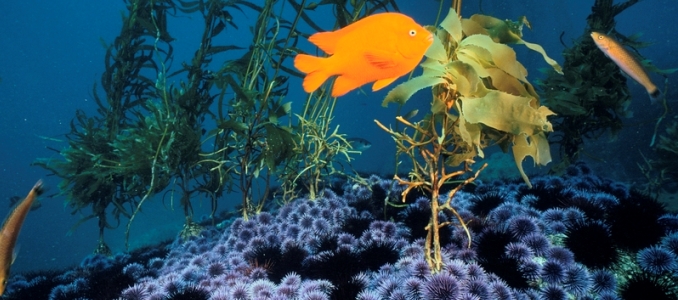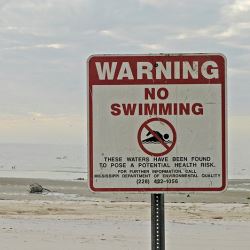A global database of marine ecosystem shifts
Big Picture
A growing body of scientific evidence suggests that marine ecosystems around the world can experience dramatic and abrupt shifts. Crossing ecosystem tipping points, where a small change in an environmental stressor leads to an abrupt change in ecosystem conditions, can have important consequences for the benefits humans can derive from these systems and the ways in which we manage them. To date, no one has compiled a comprehensive synthesis of ecosystem shifts and their drivers and consequences in marine ecosystems. Building upon existing efforts (e.g., databases from the Resilience Alliance and Stockholm Resilience Centre), we have assembled a systematic global database of regime shift examples across marine ecosystems, from the intertidal to the open ocean. This database includes regime shifts that were driven both by changes in climatic or oceanic conditions as well as those driven by anthropogenic stressors, like harvest or nutrient input. Our aim is to provide a useful compendium of examples of ecosystem-level tipping points in marine systems, as well as a robust dataset that can help answer fundamental questions about the drivers, mechanisms and consequences of these shifts.

Why we are doing it
We care about tipping points because they change the rules of the game. Ecosystem shifts are often unforeseen, and can be rapid, large, difficult to reverse and have direct impacts on people’s livelihoods and wellbeing. As a result, these non-linearities have important implications for ocean management. In addition, as managers around the world begin to shift to ecosystem approaches to marine management, an understanding of potentially irreversible non-linearities in those ecosystems will be critical to effective decision-making. Though interest in tipping points has been on the rise, a comprehensive synthesis of marine ecosystem shifts has not previously been published. Our aim here is to synthesize when, where and how ecosystem shifts occur to begin to help managers anticipate, avoid or respond to tipping points.
How we are doing it
We are compiling a global database of existing examples of abrupt shifts in marine ecosystems based on the scientific literature. This dataset includes both examples of systems that have shifted due to changes in ocean climate and those that have shifted due to human pressures. Through analysis of over 100 case examples we are finding numerous commonalities between regime shift attributes across ecosystems, geographies and spatial and temporal scales. We have recorded regime shifts in kelp, coral, seagrass, pelagic, salt marsh, lagoon, estuarine, rocky reef, tidal flat and oyster reef ecosystems. The majority of regimes shifts have been attributed to one major stressor, with changes in harvest, climate and eutrophication contributing in over 80% of the shifts recorded. These three major stressors were also the most likely to be cited as acting simultaneously to induce a shift.
We are asking a suite of questions about:
- What characterizes marine ecosystem shifts in terms of geography, ecosystem, mechanism, response, scale, and reversibility
- What characteristics of ecosystems lead to a propensity toward tipping points, and especially irreversible tipping points
- The implications of ocean tipping points for ecosystem goods and services
What’s next
We are communicating our results broadly, with a specific focus on reaching out to managers. In particular, we are conveying relevant lessons learned from this review (e.g., from similar ecosystems in other parts of the world) to our case study partners in Hawai'i and Haida Gwaii.
We are also distilling what we have learned about potential early warning indicators to help inform the identification and testing of those indicators later in the project.
Outcomes
This analysis helps demonstrate the prevalence of tipping points in marine ecosystems and yields insights into what drives ecosystem shifts, how to measure and anticipate them and why they are important to consider in marine resource management.
Building blocks
Some datasets identified in this review will be appropriate for the single stressor-ecosystem component analysis; those will be shared with Mary Hunsicker.
Other datasets may be appropriate for testing of early warning indicators.
We expect this review to help identify relevant response variables (those components of the ecosystem that typically respond to shifts) and potential early warning indicators (sensitive variables that respond quickly to changes in environmental stressors) that may be considered in portfolios of indicators. This may help to inform the case study indicator work and testing of early warning indicators.
We also hope to find commonalities across systems and scales that together, with the management review, will help managers recognize where ecosystem shifts have the potential to occur and how to best prepare and manage for these changes.
Leads
Carrie Kappel and Courtney Scarborough
Expected Project Completion
June 2016
Learn more about our other Research Activities with the Ocean Tipping Points project.


